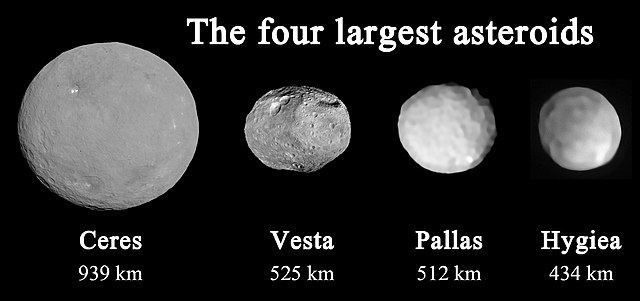The Titius–Bode law is a formulaic prediction of spacing between planets in any given planetary system. The formula suggests that, extending outward, each planet should be approximately twice as far from the Sun as the one before. The hypothesis correctly anticipated the orbits of Ceres and Uranus, but failed as a predictor of Neptune's orbit. It is named after Johann Daniel Titius and Johann Elert Bode.
Johann Daniel Titius (1729–1796)
Johann Elert Bode (1747–1826)
Ceres is a dwarf planet in the middle main asteroid belt between the orbits of Mars and Jupiter. It was the first known asteroid, discovered on 1 January 1801 by Giuseppe Piazzi at Palermo Astronomical Observatory in Sicily, and announced as a new planet. Ceres was later classified as an asteroid and then a dwarf planet, the only one inside Neptune's orbit.
Ceres as imaged by Dawn, May 2015. Two bright spots dot its surface; the bright crater at right is Hualani, while the bright spot at left is the floor of the crater Oxo
Ceres (bottom left), the Moon and Earth, shown to scale
Relative mean diameters of the four largest minor planets in the asteroid belt (dwarf planet Ceres at left)
Ceres, polar regions (November 2015): North (left); south (right). The south pole is in shadow. "Ysolo Mons" has since been renamed "Yamor Mons."






